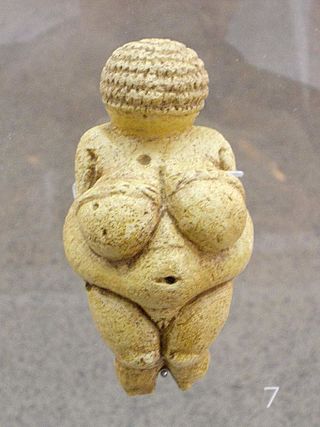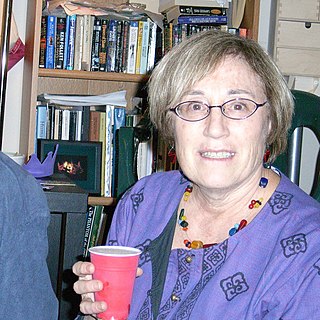Related Research Articles

The University of Massachusetts Amherst is a public land-grant research university in Amherst, Massachusetts. It is the flagship campus of the University of Massachusetts system, and was founded in 1863 as the Massachusetts Agricultural College. It is also a member of the Five College Consortium, along with four other colleges in the Pioneer Valley.

The W. E. B. Du Bois Library is one of the three libraries of the University of Massachusetts Amherst, Amherst, Massachusetts, the others being the Science and Engineering Library and the Wadsworth Library at the Mount Ida Campus. The W. E. B. Du Bois Library holds resources primarily in humanities and social and behavioral sciences. At 28 stories and 286 feet 4+1⁄8 inches tall, it is the third-tallest library in the world after the National Library of Indonesia in Jakarta at 414 feet and Shanghai Library in China at 348 feet. Measuring taller purely by height, the libraries in Jakarta and Shanghai both only have 24 floors. The W. E. B. Du Bois Library is also considered to be the tallest academic research library and 32nd tallest educational building in the world. The building maintains a security force, which is managed by various supervisors and student employees.
Landscape archaeology, a sub-discipline of archaeology and archaeological theory, is the study of the ways in which people in the past constructed and used the environment around them. It is also known as archaeogeography. Landscape archaeology is inherently multidisciplinary in its approach to the study of culture, and is used by pre-historical, classic, and historic archaeologists. The key feature that distinguishes landscape archaeology from other archaeological approaches to sites is that there is an explicit emphasis on the sites' relationships between material culture, human alteration of land/cultural modifications to landscape, and the natural environment. The study of landscape archaeology has evolved to include how landscapes were used to create and reinforce social inequality and to announce one's social status to the community at large. The field includes with the dynamics of geohistorical objects, such as roads, walls, boundaries, trees, and land divisions.

Gender archaeology is a method of studying past societies through their material culture by closely examining the social construction of gender identities and relations.
Feminist archaeology employs a feminist perspective in interpreting past societies. It often focuses on gender, but also considers gender in tandem with other factors, such as sexuality, race, or class. Feminist archaeology has critiqued the uncritical application of modern, Western norms and values to past societies. It is additionally concerned with increasing the representation of women in the discipline of archaeology, and reducing androcentric bias within the field.

Shirley Graham Du Bois was an American-Ghanaian writer, playwright, composer, and activist for African-American causes, among others. She won the Messner and the Anisfield-Wolf prizes for her works.
Margaret W. Conkey is an American archaeologist and academic, who specializes in the Magdalenian period of the Upper Paleolithic in the French Pyrénées. Her research focuses on cave art produced during this period. Conkey is noted as one of the first archaeologists to explore the issues of gender and feminist perspectives in archaeology and in past human societies, using feminist theory to reinterpret images and objects from the Paleolithic Era or the late Ice Age. She is Professor Emerita of Anthropology at the University of California, Berkeley. She was named by Discover magazine in their 2002 article, "The 50 Most Important Women in Science".

The W.E.B. Du Bois Boyhood Homesite is a National Historic Landmark in Great Barrington, Massachusetts, commemorating an important location in the life of African American intellectual and civil rights activist W.E.B. Du Bois (1868–1963). The site contains foundational remnants of the home of Du Bois' grandfather, where Du Bois lived for the first five years of his life. Du Bois was given the house in 1928, and planned to renovate it, but was unable to do so. He sold it in 1954 and the house was torn down later that decade.

The sociology of race and ethnic relations is the study of social, political, and economic relations between races and ethnicities at all levels of society. This area encompasses the study of systemic racism, like residential segregation and other complex social processes between different racial and ethnic groups.
The New Africa House, formerly known as Mills House, is an academic building and former dormitory of the University of Massachusetts Amherst built in the Georgian revival style with Art Deco accents. It is part of the Central Residential Area at the University of Massachusetts Amherst. It was designed by Louis Ross, who designed many of the dormitories on campus as well as the Student Union.
Barbara J. Heath is a professor in the Department of Anthropology at The University of Tennessee, Knoxville who specializes in historical archaeology of eastern North America and the Caribbean. Her research and teaching focus on the archaeology of the African diaspora, colonialism, historic landscapes, material culture, public archaeology and interpretation, and Thomas Jefferson.

The College of Humanities & Fine Arts is a college of the University of Massachusetts Amherst. The college was founded in 1915.
Randolph Wilson ("Bill") Bromery was an American educator and geologist, and a former Chancellor of the University of Massachusetts Amherst (1971–79). While Chancellor, Bromery established the W.E.B. Du Bois Archives at the University of Massachusetts, and was one of the initiators of the Five College Consortium. He was also President of the Geological Society of America, and has made numerous contributions as a geologist and academic. During World War II, he was a member of the Tuskegee Airmen, flying missions in Italy.
Gwendolyn DuBois Shaw is an art historian, curator, and professor of American art at the University of Pennsylvania. She has curated major exhibitions and published several books on African American art. In 2019, she became director of history, research and scholarship and senior historian at the National Portrait Gallery in Washington, D.C.
Theresa A. Singleton is an American archaeologist and writer who focuses on the archaeology of African Americans, the African diaspora, and slavery in the United States. She is a leading archaeologist applying comparative approaches to the study of slavery in the Americas. Singleton has been involved in the excavation of slave residences in the southern United States and in the Caribbean. She is a professor of anthropology at Syracuse University, and serves as a curator for the National Museum of Natural History.

Joan Margaret Gero was an American archaeologist and pioneer of feminist archaeology. Her research focused on gender and power issues in prehistory, particularly in the Andean regions of Argentina and Peru.
Donna L. Moody was a scholar, author, teacher, public speaker, Abenaki Repatriation and Site Protection Coordinator, and founder of the Winter Center for Indigenous Traditions.
Antoinette T. Jackson is Professor and Chair of Anthropology at the University of South Florida (USF) in Tampa. Her research focusses on sociocultural and historical anthropology, the social construction of race, class, gender, ethnicity; heritage resource management, and American, African American and African Diaspora culture.
Maria Franklin is an associate professor at the University of Texas at Austin. She is a historical archaeologist whose work includes black-feminist theory, African Diaspora studies and race and gender.

Carol Farrington Jopling was an anthropologist, librarian, and chief librarian of the Smithsonian Tropical Research Institute between 1981 and 1984.
References
- ↑ "Department of Anthropology: Whitney Battle-Baptiste". University of Massachusetts Amherst. Retrieved 29 December 2017.
- ↑ "AAA Presidents". The American Anthropological Association. Retrieved 2024-05-28.
- 1 2 3 Fitzgibbons, Daniel. "Battle-Baptiste Named New Director of W.E.B. Du Bois Center at UMass Amherst". University of Massachusetts Amherst. Retrieved 29 December 2017.
- ↑ "Whitney Battle-Baptiste | Institute for Social Science Research | UMass Amherst". www.umass.edu.
- 1 2 Stewart, Pearl (14 February 2019). "She's Not Just Digging for Digging's Sake". Diverse: Issues in Higher Education.
- ↑ Riley, Ricky (9 July 2015). "6 Black Archaeologists and Anthropologists You Should Know About". Atlanta Blackstar. p. 5. Retrieved 29 December 2017.